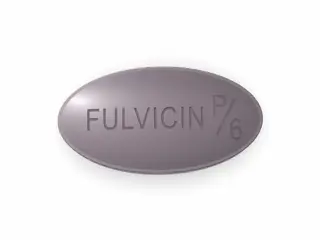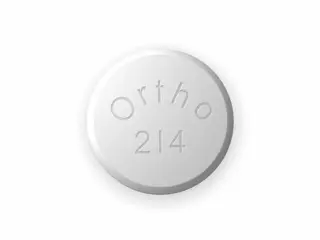Buy Griseofulvin Online in New Zealand | All Statins New Zealand
| Package | Dosage | Price | Price per Dose | |
|---|---|---|---|---|
| Dosage: 250mg | ||||
| 360 pill | 250mg | NZD758.82 | NZD2.11 | |
| 180 pill | 250mg | NZD402.63 | NZD2.23 | |
| 120 pill | 250mg | NZD284.93 | NZD2.38 | |
| 90 pill | 250mg | NZD235.37 | NZD2.60 | |
| 60 pill | 250mg | NZD179.62 | NZD3.00 | |
| 30 pill | 250mg | NZD102.18 | NZD3.38 | |

Griseofulvin Description
Overview of Griseofulvin
Griseofulvin is an antifungal medication used primarily to treat infections of the skin, hair, and nails caused by dermatophyte fungi. It belongs to the class of oral antifungal agents that inhibit the growth of fungi by disrupting their cell division process. This medication has been used for several decades and remains a reliable choice for longstanding fungal infections.
Mechanism of Action
Griseofulvin works by binding to the fungal microtubules, which hampers the mitotic spindle formation. As a result, fungal cell division is disrupted, leading to the inhibition of fungal growth. Its action is mainly fungistatic, meaning it halts the spread and proliferation of fungi rather than killing them outright. This characteristic makes it effective when the immune system can aid in clearing the infection after growth has been stopped.
Indications and Usage
Typically, Griseofulvin is prescribed for dermatophytic infections that have not responded well to topical treatments. This includes conditions like athlete's foot, ringworm, and onychomycosis (fungal infections of the nails). It is often chosen for persistent infections requiring prolonged therapy due to its ability to penetrate keratinized tissues. The medication is administered orally, generally once or twice daily, depending on the severity and location of the infection.
Dosage and Administration
Proper dosing of Griseofulvin depends on the patient's age, weight, and severity of the infection. Standard adult doses range from 500 mg to 1000 mg per day, divided into two doses. Treatment duration can last several weeks to months, especially for nail infections. It is important to take the medication with food to improve absorption and reduce gastrointestinal side effects. Patients should follow their healthcare provider's instructions carefully to achieve the best results.
Potential Side Effects
While many patients tolerate Griseofulvin well, some may experience side effects. Common adverse effects include headaches, gastrointestinal discomfort, rash, and dizziness. Liver function should be monitored during treatment, especially in long-term therapy, as hepatotoxicity can occur. Rare but serious side effects include allergic reactions and blood disorders. Patients are advised to report any unusual or severe symptoms promptly.
Precautions and Interactions
Before starting treatment with Griseofulvin, patients should inform their healthcare provider about any liver disease, pregnancy, or breastfeeding. It has known interactions with other medications, such as alcohol, certain anticonvulsants, and anticoagulants. Alcohol consumption should be avoided during therapy to prevent potential liver damage. Contraceptive methods may need adjustment, as Griseofulvin can reduce the effectiveness of hormonal birth control.
Effectiveness and Limitations
Many patients see notable improvement within several weeks of starting treatment. However, complete eradication of fungal infections, particularly nail infections, can require lengthy courses of therapy. Resistance to Griseofulvin is rare but possible, emphasizing the importance of proper dosing and adherence. It may not be suitable for everyone, especially those with certain liver conditions or hypersensitivity to the drug.



